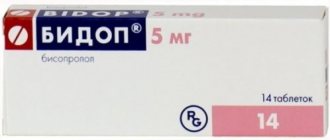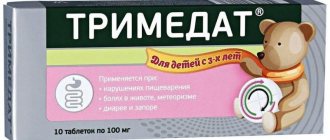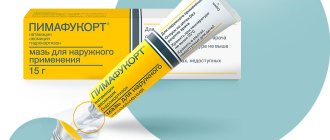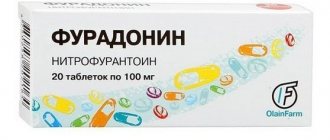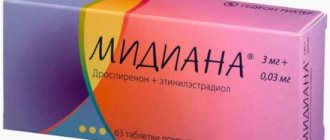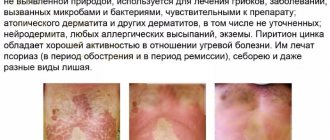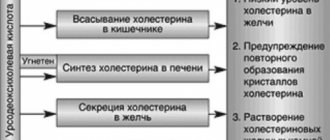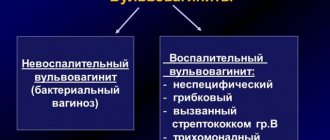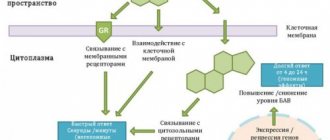The drug Cytoflavin has a pronounced metabolic effect, participates in the processes of formation and distribution of energy, cellular respiration. Long-term therapy allows you to restore the natural utilization of oxygen in tissues, stabilize the activity and functional characteristics of enzymes that form antioxidant protection.
Analogues have identical effects. The drug specifically acts on the areas of the brain that are responsible for sleep and wakefulness. The medication in tablets is used to stimulate brain activity.
Pharmacodynamics and pharmacokinetics
The effect of the drug is due to the sum of the components included in its composition:
Succinic acid is an important participant in the Krebs cycle. It is transformed into fumaric acid, which in turn becomes an active participant in the tricarboxylic acid cycle. Thanks to succinic acid, ATP is synthesized and glycolysis processes occur. At the end of the cycle, carbon dioxide and water are released.
Inosine is involved in the creation of key nucleotide enzymes in the Krebs cycle, such as FAD and NAD. Takes part in ATP synthesis.
Riboflavin is vitamin B2 and is also directly involved in the Krebs cycle.
Nicotinamide (in the Krebs cycle) - is transformed into NAD and NADP, which in turn also stimulate cellular respiration and ATP synthesis.
Cerepro
Manufacturer: VEROPHARM OJSC (Russia)
Release form: capsules, solution for intramuscular and intravenous administration
Active ingredient: choline alfoscerate
The drug has a nootropic effect and is a central anticholinergic stimulant. Cerepro activates metabolic processes and microcirculation, improves the plasticity of neuronal membranes and receptor function. During the treatment, memory, attention, and behavioral reactions improve in patients with organic brain damage and decreased vital functions.
Correctly selected and included in complex treatment, the drug Ceraxon will slow down the progression of the disease, stimulate metabolism and avoid complications.
Indications for use of Cytoflavin
What are Cytoflavin tablets for?
- cerebrovascular accident (condition after stroke );
- the indication for the use of the medicine is the inability of a person to remain in a state of mental and physical stress for a long time;
- for cerebral ischemia in newborns and premature infants;
- prevention after operations during which artificial circulation was used;
- cerebral atherosclerosis .
Instructions for use of Cytoflavin (Method and dosage)
Instructions for Cytoflavin tablets
Usually prescribed 2 tablets 2 times a day, morning and evening, with an interval of 7 hours. The drug is taken half an hour before meals. The tablet is not chewed. The course lasts 25 days; if necessary, it can be repeated after a month.
Medicine in ampoules
Prescribed intravenously. The drug cannot be administered by injection. A dropper is made with 100-200 ml of glucose solution or NaCl. The daily dose for adults is 10 ml (up to 20 in severe conditions), the course of treatment depends on the disease and can last up to 10 days.
For newborns, the optimal time of administration is considered to be from 2 to 12 hours. For a dropper, the drug is diluted with glucose in a ratio of 1:5 and 2 ml per kilogram of weight during the day. The average course of treatment is 5 days.
Antioxidants in the treatment of cerebrovascular diseases
Currently, cerebrovascular pathology ranks second among the main causes of mortality, second only to heart disease and already ahead of mortality from tumors of all locations. Cerebrovascular pathology is the leading cause of disability in the population and, therefore, represents one of the most important medical and social problems.
Today, about 9 million people worldwide suffer from cerebrovascular diseases. The leading role among these diseases is occupied by strokes, affecting from 5.6 to 6.6 million people annually and claiming 4.6 million lives. According to the World Health Organization, the incidence of stroke ranges from 1.5 to 7.4 per 1000 people. Thus, in the United States, a cerebral stroke occurs every 53 seconds.
In the Russian Federation and CIS countries, there is a progressive increase in the incidence of this pathology: approximately every 1.5 minutes, one of the Russians develops a stroke for the first time. The incidence of stroke in Russia is 450,000 cases per year: in Moscow alone, the number of acute strokes ranges from 100 to 120 cases per day. The overall mortality rate from stroke in 2001 was 1.28 per 1000 people (men - 1.15, women - 1.38). The mortality rate from stroke in our country is one of the highest in the world: in 2000, the standardized rate was 319.8 per 100,000 people. In terms of mortality rates, Russia ranks second, second only to Bulgaria. Mortality in the acute stage of all types of stroke is approximately 35%, increasing by another 12–15% by the end of the first year. Along with high mortality, the consequences of strokes are also socially significant - the development of disability with loss of ability to work. Disability after a stroke ranks first among all causes of primary disability, since less than 20% of survivors return to their previous social and work activities. In addition, enormous damage is caused to the economy, taking into account the costs of treatment, medical rehabilitation, and losses in production. In the USA, material costs for strokes range from 7.5 to 11.2 million dollars per year, costs per patient, taking into account the need for long-term treatment and social rehabilitation, range from 55 to 73 thousand dollars per year.
The ratio between ischemic and hemorrhagic stroke was previously 5:1. Registry data from 2001 showed that in Russia ischemic strokes amounted to 79.8%, intracerebral hemorrhages - 16.8%, subarachnoid hemorrhages - 3.4%.
In Russia, up to 100,000 new cases of cerebral hemorrhages are registered annually. The incidence of hemorrhagic stroke is higher in men, while the mortality rate is higher in women. According to a number of authors, mortality from cerebral hemorrhage varies from 38 to 93%, with 15–35% of patients dying within a month from the moment of illness, half of them die within the first three days. Only 10% of patients by the end of the first month and 20% after six months can care for themselves; 25–40% of patients have a moderate degree of disability, 35–55% have severe disability.
The epidemiological and demographic situation in the world regarding cerebrovascular pathology is currently characterized by the widespread prevalence of this type of pathology, the “aging” of the population and the increase in the frequency of progressive cerebrovascular diseases, the “rejuvenation” of strokes due to the increase in the number of extreme factors and impacts (A. A. Mikhailenko and co-authors, 1996; A. A. Skoromets, 1999). In a large number of people over the age of 50, the processes of so-called “normal aging” are quickly replaced by pathological changes associated primarily with insufficiency of cerebral blood flow due to atherosclerotic damage to the vessels supplying blood to the brain, with changes in the rheological properties of the blood, leading to dysregulation and decreased neurotransmitter activity. Clinically, these neurotransmitter and morphological dysregulations are manifested by severe symptom complexes of acute and/or chronic cerebral ischemia, requiring constant and effective correction.
The number of patients with symptoms of chronic cerebral ischemia in our country is growing as steadily as the number of patients with acute cerebrovascular accidents, amounting to at least 700 per 100,000 people. While our country currently has statistics on acute strokes, albeit not in full, there are no reliable statistics on the number of patients with chronic cerebral ischemia. These are mainly outpatient patients; visiting a clinic is often difficult for them; Often they are given complex diagnoses, while cerebrovascular pathology is not taken into account or is classified as a complication, which makes it difficult to obtain objective data. The shortage of qualified neurologists in outpatient clinics also often leads to incorrect interpretation of this diagnosis.
Pathomorphological disorders in patients with acute and chronic cerebral ischemia are based on a variety of pathogenetic factors, such as atherosclerosis, arterial hypertension, as well as their combinations, cardiac pathology, changes in the condition of the spine with compression of the vertebral arteries, hormonal disorders leading to changes in the coagulation system blood, other types of disorders of the hemostatic system and physicochemical properties of blood, leading to the formation of functional and morphological ischemic disorders.
The most common causes of the formation of clinical manifestations of cerebral ischemia are atherosclerotic stenotic and occlusive lesions of the main arteries of the head; heart diseases, which include primarily coronary heart disease with symptoms of atrial fibrillation and a high risk of microembolization into intracerebral vessels. Atherosclerosis is a systemic vascular disease that leads to infiltration of the intima of the arteries with cholesterol coming from the blood. In the development of atherosclerosis, hereditary predisposition and constitutional characteristics play a role. However, the main reason for the wide spread of atherosclerosis in recent years is the functional effects on higher nervous activity of a person, which can be classified as negative manifestations of urbanization in the conditions of scientific and technological progress. They lead to long-term and systematic neuropsychic stress. The development of atherosclerosis is promoted by physical inactivity and hypokinesia (work without physical exertion, limited walking, passive rest), hypoxia (urban air pollution), increased exposure to external electromagnetic potential, the negative impact of noise and the pace of city life, insufficient sleep and excess calorie content of food (taking into account hypokinesia). The widespread use of smoking in recent years as a factor contributing to the development of vasospasms in various vascular systems is also of known importance. In this regard, in recent years, about a contingent of patients with atherosclerosis and arterial hypertension, in particular, from 50 to 60% of cases of cerebral vascular diseases occur between the ages of 50 and 60 years. At the same time, cerebral atherosclerosis takes first place compared to arterial hypertension. Four of the factors noted above are of leading importance in the development of vascular cerebral pathology, in particular atherosclerosis: neuropsychic stress, hypokinesia, physical inactivity and excess calorie intake. As a result of their influence, overexcitation of the cerebral cortex and the hypothalamic-pituitary-adrenal system occurs, increased release of catecholamines, disruption of all types of metabolism, especially in the walls of blood vessels, and sometimes increased blood pressure.
The study of the causes of morbidity and mortality in vascular diseases of the nervous system has led to the establishment of risk factors that play a contributing role in the development of cerebral vascular accidents. These factors include: arterial hypertension, vascular hypotension, obesity (overweight), hypercholesterolemia (especially in young and middle-aged people), smoking, alcohol abuse, family history, coronary atherosclerosis, diabetes mellitus, endocrine pathology, mineral metabolism disorders (cervical osteochondrosis), living in areas with sharp fluctuations in meteorological factors, work with high intellectual stress.
Hemorrhagic stroke, also characterized by a severe secondary ischemic cascade, most often occurs as a complication of arterial hypertension (60% of cases). The development of degenerative changes (lipohyalinosis, fibrinoid necrosis) in small perforating arteries of the brain and the formation of microaneurysms against the background of arterial hypertension are the most important prerequisites for the occurrence of hypertensive intracerebral hemorrhage, and hemorrhage develops more often in patients with severe or moderate arterial hypertension than in patients with “mild” » arterial hypertension. Pathogenetically, intracerebral hemorrhages develop due to rupture of a vessel or through diapedesis. The next most common etiological factor for cerebral hemorrhage is rupture of an arteriovenous malformation, hemorrhage from ruptured aneurysms (10–12% of cases). Occurring more often in old age, cerebral amyloid angiopathy, which is formed due to the deposition of abnormal amyloid protein in the tunica media and adventitia of small cortical arteries and arterioles, contributes to the occurrence of miliary aneurysms and fibrinoid necrosis of the affected vessels, which can rupture when blood pressure rises, causing intracerebral hemorrhage in 10 % of cases. Such hematomas are often multiple. Long-term use of anticoagulants in 8–10% of cases leads to intracerebral hemorrhage, especially when hypocoagulation is achieved, i.e., a decrease in the prothrombin index to 40% or an increase in the international normalizing coefficient to 5. Brain tumors or brain metastases are complicated by hemorrhages in them in 6 -8% of cases. Up to 20% are other causes, such as hemophilia, thrombocytopenia, leukemia, hemorrhagic diathesis, arteritis, thrombosis of intracranial veins, alcohol and drug abuse, coagulopathy, vasculitis.
The mechanism of development of hypoxia, which is a discrepancy between tissue demand for oxygen and its delivery, is the same for any form of cerebrovascular pathology. It is associated primarily with impaired oxidation of substrates in body tissues as a result of difficulty or blockade of electron transport in the mitochondrial respiratory chain, which leads to damage to lysosome membranes with the release of utilitarian enzymes into the intercellular space.
Stress, or more precisely distress according to Selye’s theory, is a mechanism of nonspecific adaptation to the changing conditions of the organism’s environment.
At the initial stage of oxygen starvation in mitochondria, the rate of aerobic oxidation and oxidative phosphorylation decreases, which leads to a decrease in protein synthesis and gene expression, a decrease in the amount of adenosine triphosphate (ATP), an increase in adenosine diphosphate (ADP) and adenosine monophosphate (AMP); the ATP/ADP+AMP ratio decreases. With a further decrease in cerebral blood flow, the enzyme phosphofructokinase (PFK) is activated, anaerobic glycolysis is enhanced, and then a final transition to anaerobic respiration is noted, which adapts the cell to hypoxia, but glycogen reserves are depleted. This, in turn, entails the accumulation of under-oxidized lactate, a decrease in pyruvate with the development of lactic acidosis - up to the development of cerebral edema.
At the same time, the activity of lactate dehydrogenase increases and the activity of succinate dehydrogenase, which supplies electrons to the respiratory chain of mitochondria, decreases, which indicates a disruption in the processes of energy formation in the ischemic brain. Under such conditions, anaerobic glycolysis does not occur, which leads to severe energy deficiency. At the final level, destabilization of cell membranes occurs, disruption of the functioning of ion channels, damage to the potassium-sodium pump, potassium (an excitatory neurotransmitter) leaves the cell, which makes it less excitable, and sodium enters the cell in excess, followed by sodium along the osmotic gradient and enters the cell Excessive amounts of water leaving the interstitium accumulate, which leads to cell hyperhydration, cloudy swelling, and then balloon degeneration. The most important role in this process belongs to glutamate receptors.
Oxidative stress, closely associated with the ischemic cascade, occurs when glutamate receptors are excited and consists of excessive accumulation of free radicals, activation of lipid peroxidation and excessive intracellular accumulation of their products. The reactions of oxidative stress and the ischemic cascade interact and potentiate each other.
Free radicals (these are molecules with an unpaired electron) are highly reactive forms of oxygen, hydrogen peroxide, aldehydes formed under hypoxic conditions, with incomplete reduction of oxygen, changing the functional properties of a number of enzymes, carbohydrates, proteins, including deoxyribonucleic acid (DNA) and ribonucleic acid (RNA), as a result the cell loses its functions, abnormal proteins appear and, in addition to the direct damaging effect, secondary destructive processes are stimulated. Oxygen for any cell, especially for a neuron, is the main energy acceptor in the mitochondrial respiratory chain. By binding to the iron atom of cytochrome oxidase, the oxygen molecule undergoes four-electron reduction to form water. The main stable form of oxygen is “triplet” oxygen, in the molecule of which both unpaired electrons are parallel and their valences (spins) are directed in the same direction. Oxygen, in the molecule of which the valences are directed in different directions, is called singlet, it is unstable and toxic for biological substances. Free radicals are unstable and tend to transform into stable compounds by pairing a free radical, tearing off an atom, most often hydrogen, from another compound and attaching it to itself.
Along with the processes of free radical oxidation, stable antioxidant radicals are produced in biological objects, which are capable of abstracting hydrogen atoms only from special molecules that have weakly bound hydrogen atoms. This class of chemical compounds is called antioxidants, since their mechanism of action is based on inhibition of free radical processes in tissues, which inhibits the development of destructive changes and inactivates oxidative stress reactions. Changes in the structure and function of substrates under conditions of ischemia and stress depend on the ratio of the activity of free radicals and antioxidants.
It should be noted that the pathophysiological mechanisms of the emergence and progression of oxidative stress in patients with any form of cerebrovascular pathology are the same and are characteristic of both patients with ischemic and hemorrhagic stroke and patients with chronic forms of cerebrovascular insufficiency. Chronic cerebral ischemia is a disease that progresses stepwise against the background of repeated episodes of dyscirculation, leading to an increase in brain hypoxia.
Treatment of cerebral stroke consists of general and specific methods. The first include measures to ensure adequate oxygenation, correction of blood pressure, relief of complications, possible seizures, monitoring the condition of vital organs, patient care measures, as well as the use of specific therapy methods that stimulate the protective mechanisms of brain tissue in conditions of acute ischemia and hypoxia . The same applies to the processes of correction of chronic forms of cerebral circulatory disorders.
One of the most promising methods of nonspecific therapy for cerebral stroke and chronic forms of cerebral circulatory disorders is currently the use of antioxidants, which are specific correctors of brain energy metabolism, acting specifically under conditions of ischemia and hypoxia.
The body has a physiological antioxidant system that maintains oxidative-antioxidant balance both in liquid media (blood, lymph, intracellular and intercellular fluid) and in the structural elements of the cell (plasmic, endoplasmic, mitochondrial, cell membranes). Enzymatic antioxidants include: superoxide dismutase, which inactivates the superoxide radical inside the cell; catalase, which decomposes intracellular hydrogen peroxide; glutathione dehydroascorbate reductase, some other peroxidases.
Non-enzymatic antioxidants include vitamins C, E, K, glucose, ubiquinones, phenylalanine, transferrin, haptoglobin, tryptophan, ceruloplasmin, carotenoids. Biological and chemically synthesized antioxidants are divided into fat-soluble and water-soluble. The former are localized where the target substrates for attack by free radicals and peroxides are located, the most vulnerable biological structures to peroxidation processes, which include primarily biological membranes, blood lipoproteins, and the main targets in them are unsaturated fatty acids. The most significant fat-soluble antioxidant is α-tocopherol; it interacts with the hydroxyl radical OH and has an inhibitory effect on singlet oxygen, preserving the activity of membrane-bound enzymes. α-tocopherol is not synthesized in the body; it belongs to the group of vitamins (vitamin E), is a universal fat-soluble antioxidant and a natural immunomodulator, normalizing the indicators of cellular and humoral immunity. Among the water-soluble antioxidants, the most important are glutathione, which plays a key role in protecting cells from toxic oxygen intermediates, and the ascorbic acid system, which is especially important for the antioxidant protection of the brain. It should be noted that antioxidants supplied in food also take part in the fight against oxidative stress: minerals (selenium, magnesium, copper compounds), some amino acids, flavonoids (plant polyphenols). However, their role is reduced to a minimum if we take into account that the diet of a modern person is dominated by refined and processed foods that lack natural qualities (even if plant products predominate in the diet), which is the cause of chronic deficiency of antioxidants in the human body.
The most adequate synergist and almost ubiquitous companion of ascorbic acid is the system of phenolic compounds. It is found in all plant living organisms, making up 1–2% of biomass or more, and performs various biological functions.
The antioxidant properties of phenols are associated with the presence in their structure of weak phenolic hydroxyl groups, which easily give up their hydrogen atom when interacting with free radicals and act as free radical traps, turning into low-active phenoxyl radicals. The greatest diversity of chemical properties and biological activity is characterized by phenolic compounds with two or more hydroxyl groups in the benzene ring. Such classes of phenolic compounds form a buffer redox system under physiological conditions. The latest generation phenolic antioxidant is the drug Olifen, the molecule of which contains more than 10 phenolic hydroxyl groups that can bind a large number of free radicals.
Currently, α-tocopherol, ascorbic acid, methionine, cerulloplasmin, carotene, ubiquinone, and emoxypine are used in clinical practice. However, the disadvantage of these drugs is the need for long-term use (several weeks) to ultimately achieve a weak antioxidant and antihypoxic effect. This provided the basis for the search and study of new synthesized antioxidants.
In recent years, the effect of succinic acid, its salts and esters, which are universal intracellular metabolites, has been widely studied. Succinic acid, contained in all tissues and organs, is the product of the 5th and substrate of the 6th reaction of the tricarboxylic acid cycle. The oxidation of succinic acid in the 6th reaction is carried out using succinate dehydrogenase. Performing a catalytic function in relation to the Krebs cycle, succinic acid reduces the concentration of other cycle products in the blood - lactate, pyruvate, citrate, produced and accumulated in the early stages of hypoxia, and is thereby included in energy metabolism, directing the oxidation process along the most economical path. The phenomenon of rapid oxidation of succinic acid by succinate dehydrogenase, accompanied by ATP-dependent reduction of the pool of pyrimidine dinucleotides, is called monopolization of the respiratory chain. The biological significance of this phenomenon lies in the rapid resynthesis of ATP. The Roberts cycle, or the so-called γ-aminobutyrate shunt, functions in nervous tissue, during which succinic acid is formed from γ-aminobutyric acid (GABA) through the intermediate stage of succinic aldehyde. The formation of succinic acid is also possible under conditions of hypoxia and oxidative stress in the reaction of oxidative deamination of α-ketaglutaric acid in the liver. The antioxidant effect of succinic acid is associated with its effect on the transport of mediator amino acids, as well as with an increase in the content of aminobutyric acid in the brain due to the Roberts shunt. Succinic acid in the body normalizes the content of inflammatory mediators histamine and serotonin, increases microcirculation in organs and tissues, primarily in the brain, without affecting blood pressure and heart function. The antihypoxic effect of succinic acid is associated with the activation of succinate dehydrogenase oxidation and the restoration of the activity of cytochrome oxidase, the key redox enzyme of the respiratory chain.
Currently, derivatives of succinic acid are widely used - domestic drugs reamberin, cytoflavin, mexidol.
Mexidol is an antioxidant, membrane protector, antihypoxant with direct energizing action, inhibiting free radicals, reducing the activation of lipid peroxidation, increasing the activity of its own physiological antioxidant system, activating the energy-synthesizing functions of mitochondria and improving energy metabolism in the cell. Mexidol has a modulating effect on membrane-bound enzymes, ion channels, receptor complexes, including GABA and acetylcholine, improves synoptic transmission in brain structures, correcting disorders in microcirculatory systems. Mexidol acts under conditions of ischemia and hypoxia as a specific trap of free radicals, reducing their damaging effect on cerebral structures. The drug is prescribed in doses of 200 to 500 mg per day intravenously in saline or intramuscularly.
Detoxification 1.5% solution for infusion Reamberin, which contains succinic acid salt and microelements (magnesium chloride, potassium chloride, sodium chloride), has antioxidant, antihypoxic, energy-protective effects, reduces the production of free radicals, has a positive effect on aerobic processes during ischemia and hypoxia, restores the energy potential of the cell, utilizes fatty acids and glucose in the cells, normalizes the acid-base balance and gas composition of the blood. Reamberin is successfully used as an infusion solution in critical conditions associated with brain damage, as well as in any conditions caused by endo- and exotoxicosis (cerebral strokes, delirious and predelirious states, poisoning, infectious diseases, clinical manifestations of a systemic inflammatory reaction, liver failure , pancreatic necrosis, peritonitis). The standard dosage is up to 800 ml (400 ml 2 times) per day intravenously. The drug can serve as a basic infusion solution for the use of other medications.
Cytoflavin is a metabolic corrector and energy protector, antioxidant, antihypoxant, aimed at normalizing conditions accompanied by disruption of free radical homeostasis, having a pronounced anti-ischemic effect, reducing the intensity of lipid peroxidation, stimulating the antioxidant defense system. Cytoflavin is a balanced complex of two metabolites (succinic acid, riboxin) and two coenzymes of vitamins - riboflavin (B2) and nicotinamide (PP). The active substances included in this complex preparation have a high level of influence on the metabolism of neuronal structures and act as effective correctors of its imbalance under conditions of ischemia, hypoxia and oxidative stress. Thus, riboflavin mononucleotide, a coenzyme that activates succinate dehydrogenase, a flavoprotein used to activate alternative NAD (Nicotinamide Adenine Dinucleotide)-dependent metabolic pathways, has a direct antihypoxic effect associated with an increase in the activity of flavin reductases and restoration of the level of ATP and creatine phosphate (macroergs). It has been proven that riboflavin penetrates the cell membrane regardless of pH. Its entry into the cell depends only on the value of the transmembrane potential. Riboflavin stimulates the utilization of succinic acid by activating the mitochondrial transport system of dicarboxylic acids of the Krebs cycle through the shuttle (glycerol phosphate) pathway, and succinic acid, in turn, increases the transmembrane potential, increasing the transport of riboflavin across membranes. In addition, riboflavin increases the activity of dehydrogenases, preventing ischemic damage to nervous tissue, and inhibits lipid peroxidation in tissues provoked by iron ions Fe2+.
Riboxin (inosine) has a pronounced antioxidant effect, which is realized by a complex of interconnected metabolic pathways, stimulating the activation of NAD synthesis in mitochondria from nicotinamide and stimulating anaerobic glycolysis with the formation of lactate and NAD. It is characterized by a neuroprotective effect in reperfusion syndrome, potentiating the vasodilating effect of adenosine and inhibiting the enzyme adenosine deaminase.
Nicotinamide is a neuroprotector, one of the fragments of NAD, which activates NAD-dependent cell enzymes, including the antioxidant systems of ubiquinone oxyreductases, which protect cell membranes from destruction by radical particles. Nicotinamide is a selective inhibitor of the enzyme poly-ADP-ribose synthetase, which is formed under ischemic conditions and leads to dysfunction of intracellular proteins with subsequent cell apoptosis.
Succinic acid, as an antioxidant, deactivates peroxidases in mitochondria and increases the activity of NAD-dependent enzymes. Nicotinamide and riboflavin, in turn, increase the pharmacological activity of succinic acid. The drug is administered in a dose of 10–20 ml per day intravenously by slow drip in saline solution or 5% glucose. In severe conditions associated with diffuse hypoxia, resuscitation measures, post-reperfusion syndrome, the dosage of the drug can be increased to 40 ml per day, intravenous slow drip administration (60 drops per minute) is indicated.
Numerous pilot and placebo-controlled studies have revealed the positive effect of including the above antioxidants (cytoflavin, reamberin and mexidol) in the complex therapy of patients with cerebral strokes and chronic forms of cerebrovascular disorders. Research in recent years has shown the feasibility of the complex use of these drugs in the treatment of cerebrovascular disorders, since Mexidol and Cytoflavin have different points of application and their combined use can help correct energy processes in brain tissue with simultaneous utilization of free radical oxidation products.
In addition, cytoflavin has been shown to be highly effective in the treatment of patients with intracerebral hemorrhages, characterized by a particularly high level of oxidative stress. A clear relationship between the effect of cytoflavin therapy and the size of intracerebral hematoma was revealed. When cytoflavin is included in the complex therapy of intracerebral hemorrhages, the most significant regression of disorders of consciousness is observed, especially pronounced in hematomas measuring 10–30 cm3, a more rapid regression of focal neurological deficit, and a better functional outcome.
For all modern antioxidants, a clear dependence of the degree of effectiveness on the timing of initiation of therapy has been proven. The maximum clinical effect can be achieved when therapy is started within a period of 2 to 6 hours from the moment of cerebral catastrophe. A less striking but real clinical effect in the form of activation of consciousness and a decrease in focal neurological symptoms is observed when therapy is started within a period of up to 24 hours.
In patients with chronic ischemia, long-term planned therapy with antioxidants significantly corrects the quality of life and helps prevent the progression of functional and morphological cerebral disorders.
Early therapy with antioxidants is currently considered as a real pathogenetically determined method for correcting cerebral metabolism in cerebral vascular disorders.
S. A. Rumyantseva
,
Doctor of Medical Sciences, Professor A. A. Kravchuk E. V. Silina RGMU, City Clinical Hospital No. 15, Moscow
Analogues of Cytoflavin
Level 4 ATC code matches:
Trigamma
Riluzole
Huato Boluses
Vitagamma
Vitaxon
Hypoxene
Glycine
Mexiprim
Mexidol
Neurox
Glitsed
At this time, there are no drugs with the same set of active ingredients.
There are similar drugs:
- Antifront
- Armadin
- Huato Boluses
- Borizol
- Glycine
- Glitsed
- Glutamic acid
- Cortexin
- Mexiprim
- Neurotropin
- Nikomex
- Rilutek
The price of analogues varies depending on the manufacturer and composition.
Piracetam
Manufacturer: JSC ORGANIKA (Russia)
Release form: tablets, capsules, solution for IM and IV injections
Active ingredient: piracetam
Piracetam belongs to the group of nootropics. This analogue of Cytoflavin has a positive effect on the functions of the central nervous system, improving intracellular metabolism. The medication stimulates microcirculation, reduces blood viscosity and has a positive effect on conductivity between synapses. Taking the drug improves communication between both hemispheres of the brain.
Reviews about Cytoflavin
Good, almost no negative ones. The tablets are well tolerated, and adverse reactions occur quite rarely. Almost all people who took the medicine as prescribed by their doctor experienced noticeable improvements in their well-being.
Children welcome, reviews
There are no clinical data on the use of Cytoflavin in children. Although the medication is not recommended, it is often prescribed for developmental delays and other abnormalities. Reviews are often good; some notice positive changes after the first course. The drug is well tolerated and used in complex therapy.
Basic instructions
Cytoflavin (analogues of the drug in tablets have identical effects or indications) is prescribed during pregnancy when the expected effect for the mother is higher than the potential risk for the unborn baby. The decision on the advisability of prescribing the drug during this period, as well as when breastfeeding a baby, is made by the doctor individually in each specific case, based on the results of the examination.
If the drug is taken in the evening, then this should be done no later than 6 pm. Taking the medication after the specified time may cause difficulty falling asleep, which is caused by its tonic properties.
When prescribing medication to patients suffering from arterial hypertension, it is possible to adjust the dosage of antihypertensive drugs.
Prescribe with caution for diseases of the digestive system in the anamnesis (ulcers, erosion of the duodenum and stomach, gastritis, exacerbation of duodenitis). Patients who suffer from one of the above pathologies should definitely consult a doctor before using the medication.
While taking the medicine, urine may turn a rich yellow color, which is not considered a deviation and is explained by the presence of riboflavin.
Almost all active ingredients can be combined with other medications. The exception is riboflavin. It is contraindicated to be taken together with streptomycin.
Side effects may occur during Cytoflavin therapy:
- The cardiovascular system. Short-term increase in blood pressure.
- Digestive system. A feeling of bitterness and dryness, a metallic taste in the mouth, nausea, vomiting, pain in the right or left hypochondrium.
- Nervous. Migraines, sleep disorders.
In case of hypersensitivity to the components of the medication, rashes, hyperemia, urticaria or itching may occur. Long-term use of large doses can provoke hyperuricemia, exacerbation of gout, visual disturbances, and kidney dysfunction. The medication does not have a negative impact on the ability to drive vehicles and perform professional activities that require quick reaction and increased attention.
Price for Cytoflavin, where to buy
The average price for Cytoflavin tablets is 500 rubles per 50 pcs.
The price for 10 ml ampoules is about 1000 rubles for 10 pcs. and 600 rubles for 5 pieces.
- Online pharmacies in RussiaRussia
- Online pharmacies in UkraineUkraine
- Online pharmacies in KazakhstanKazakhstan
ZdravCity
- Cytoflavin solution for intravenous injection.
10ml 5 pcs. LLC NTFF POLYSAN 654 rub. order - Cytoflavin tablets p.p.o. enteric solution 50 pcs. LLC NTFF POLYSAN
RUR 488 order
- Cytoflavin tablets p.p.o. enteric solution 100 pcs. LLC NTFF POLYSAN
850 rub. order
Pharmacy Dialogue
- Cytoflavin (table p/o No. 100) Polisan NTFF
RUB 818 order
- Cytoflavin (amp. 10 ml No. 5 (pack dark st. contact cell)) Polisan NTFF
RUR 626 order
- Cytoflavin (amp. 10 ml No. 10 (package contact cell)) Polisan NTFF
RUB 1,089 order
- Cytoflavin (amp. 10 ml No. 10 (package contact cell)) Polisan NTFF
RUB 1,132 order
- Cytoflavin (table p/o No. 50) Polisan NTFF
RUR 448 order
show more
Pharmacy24
- Cytoflavin 10 ml N10 solution TOV NTFF Polisan, Russian Federation
654 UAH order - Cytoflavin N50 tablets TOV NTFF Polisan, Russian Federation
208 UAH order
PaniPharmacy
- Cytoflavin infusion Cytoflavin solution for intravenous injection. amp. 10ml No. 10 Russia, Polisan
689 UAH. order
- Cytoflavin tablets Cytoflavin tablets p/o No. 50 Russia, Polisan
232 UAH. order
show more
Mildronate
Manufacturer: JSC GRINDEX (Latvia)
Release form: capsules, solution in ampoules for IM and IV injections
Active ingredient: meldonium
Mildronate is a metabolite that stimulates and restores balance in the delivery of oxygen to tissues and the need of cells for it. The medication removes accumulated toxic substances from cellular structures due to metabolism, protects them from damaging factors and tones their function.
Under the influence of this analogue of Cytoflavin, the body acquires the ability to withstand increased stress and recover quickly.

